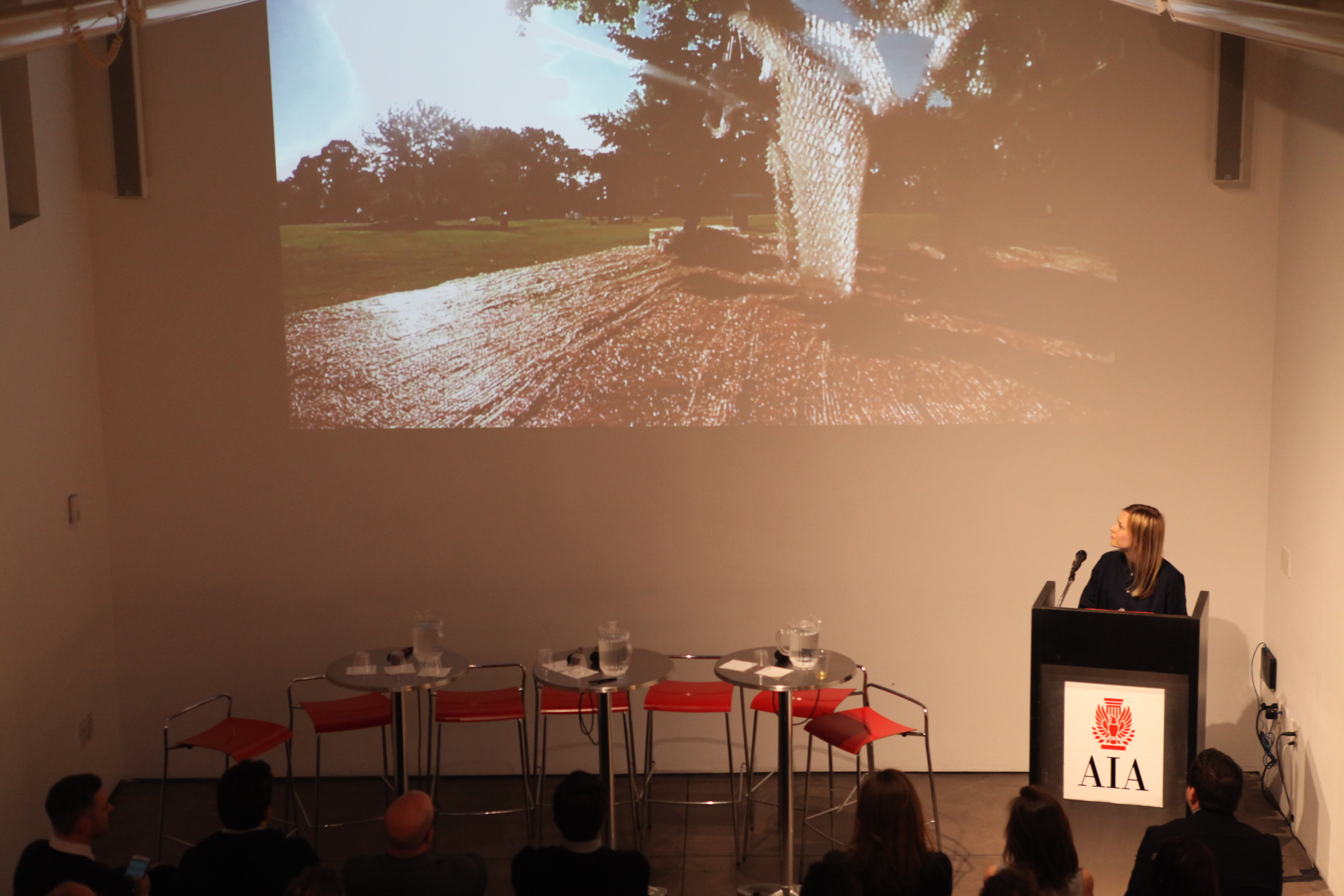by: Jonah Bleckner
On 04.06.16, the AIANY Emerging New York Architects and Global Dialogues Committees hosted a panel discussion about the ways in which new forms of media are forcing the architecture industry to re-envision the way it defines itself, and how it communicates the industry’s values to everyone else who holds a stake in the built environment. The conversation was kicked off by David Basulto, a formally-trained architect who co-founded the website ArchDaily, an immense virtual repository of architectural news, images, information, and interviews. Today, ArchDaily attracts 700,000 daily visits, making it one of the world’s most visited architecture websites. The success of ArchDaily, a startup that was incubated in Santiago, Chile, is a testament to the globalization of architectural thought and practice. The Internet has catalyzed this globalization, Basulto explained, by creating networks to connect people and issues, regardless of their location. With urban populations anticipated to grow exponentially across the globe, he sees the architect as playing a key role in helping to design and build a more just and sustainable future.
After Basulto framed what is at stake globally, Benjamin Prosky, executive director of the Center for Architecture, pointed out the way in which the Internet has acted as a platform for the architectural industry to share films about their work. The incorporation of film has, to some extent, been driven by architizer, another major archive of architectural media that he co-founded. According to Prosky, film is a powerful means for architects to showcase their work and boost publicity. He continued to take advantage of the Internet as a space to disseminate films about architecture while he was the assistant dean of communications at Harvard’s Graduate School of Design. One such example is the GSD YouTube channel that publicly releases lectures, video shorts, and thesis presentations so that architectural discourse can be accessible beyond the walls of academic institutions, which have historically not been models of inclusivity.
The discussion about the relationship between architecture and film was extended even further by architect-turned-filmmaker Ian Harris, founder of the video production company Arbuckle Industries. Frustrated with the outdated model that architects use to tell their story and communicate their values, Harris believes that architects should turn to film, an immersive medium that can allow them to tell better stories about the impact of good design. Despite film’s potential power to communicate with people beyond the insular architectural community, it is still an underutilized technology. We live in a generation where “content is king,” Harris declared, “and we are offering monotony.” As a point of comparison, he asked the audience to consider the difference between the promotional video for The Dryline (formerly the Big U) with the one released for Santiago Calatrava’s contentious World Trade Center Transit Hub.
Beyond film, there are other ways that architects can engage communities more profoundly in the design and building process. Ekaterina Zavyalova discussed her experience using Kickstarter to inspire a more participatory funding and fabrication process for the Governor’s Cup Pavilion, which won the City of Dreams Pavilion design competition. Zavylova and her team at CDR Studio raised over $14,000 to collect more than 30,000 discarded plastic cups across New York City, and then construct the undulating, translucent canopy with the help of more than 100 volunteers. From start to finish, the Governor’s Cup Pavilion redefined the way that an architecture firm can interact with the public.
The final speaker was George Valdes. As the VP of Product at IrisVR, Valdes is at the forefront of demonstrating the benefits that VR technology can contribute to the AEC industry. Architects can get lost in their own heads, Valdes explained, which creates obstacles for collaboration. With VR, there can be clearer lines of communication about the representation of space with all the stakeholders involved in the design and construction process. Beyond convincing the AEC industry to incorporate VR into their workflow, he also organizes the Built-In meetup, which aims to encourage entrepreneurship and innovation within the architecture and design community.
By the end of the evening, the ethos amongst the panelists and audience was that there is a sense of urgency for architects to transform the way they communicate and engage with each other, potential collaborators, clients, and the communities that inhabit the built environment.
Jonah Bleckner is a Sociospatial Analyst at PLASTARC. He holds a degree in Political Science and Philosophy from Vassar College and is passionate about the potential to use research, design and public policy as tools to address social, economic, racial and environmental injustices.
Event: Viral Voices V: Architecture in Motion
Location: Center for Architecture, 04.06.16
Speakers: David Basulto, Founder and Editor-in-Chief, ArchDaily; Ian Harris, Founder, Arbuckle Industries; George Valdes, VP Product, IrisVR; Ekaterina Zavyalova, Co-founder, FOAM, Architectural Designer, CDR Studio; Benjamin Prosky, Executive Director, AIANY/Center for Architecture
Organized by: AIANY Emerging New York Architects (ENYA) and AIANY Global Dialogues Committee













